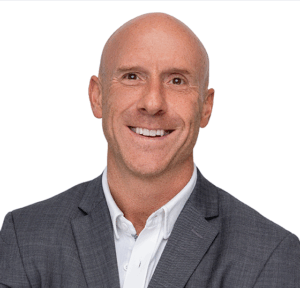 Creating real-time content is a challenge for any brand – but for brands operating in highly regulated industries, it’s a potential compliance risk.
Creating real-time content is a challenge for any brand – but for brands operating in highly regulated industries, it’s a potential compliance risk.
There isn’t a federal regulator out there that doesn’t have rules around misleading, deceptive or unfair practices, including the Consumer Financial Protection Bureau, the Federal Trade Commission and the Federal Communications Commission.
And that could make content marketing – native and social in particular – a bit of a minefield.
“Native advertising is clearly in the cross-hairs of regulators, justifiably,” said Lisa Shalett, former head of brand marketing at Goldman Sachs, speaking at the PerformLine user summit on Tuesday. “It’s something everyone seems to define a little differently.”
In December, the Federal Trade Commission released enforcement guidelines on native advertising online, with transparency as the main takeaway. The FTC expects advertisers and publishers to label their native content appropriately, to provide all the necessary disclosures and to avoid misleading messaging.
It’s not the kind of thing that really lends itself to real-time content at scale and always-on publishing, said Alicianne Rand, VP of marketing at content marketing software platform Newscred, whose clients include companies in regulated industries like Fidelity, New York Life, Visa and Barclays.
“You have to tailor content to different types of context, which can be really hard,” she said. “When you have to have every single piece of content approved by compliance and legal, it really decreases your speed to market and it makes real-time content creation … very, very difficult.”
As a compromise between engaging in content creation and mitigating any associated risk, a number of Newscred clients, especially in the financial, health care and education sectors, have abandoned the idea of real-time content in favor of a very specific and clearly planned content pipeline.
They develop an editorial calendar a quarter or more in advance, and they have it approved by legal. “They have very set workflows and approval processes, so it’s very streamlined, and they know exactly who needs to sign off when,” Rand said.
Brett Lofgren, CRO of Contently, a content marketing tech company that operates a network for around 70,000 freelancers around the world, said he’s seen clients create content-specific centers of excellence comprising marketing execs, editors and people from the legal department, to help streamline who is responsible for what in terms of content creation and approval.
It’s a good way to get legal involved in the process earlier so editorial doesn’t have to suffer disappointments – or regulatory attention – later down the line, he said.
Goldman Sachs did something of the sort during Shalett’s tenure there. Before taking on the global marketing role in 2010, Shallet served as Goldman’s COO of global compliance, legal and internal audit for four years, including during the height of the 2008 financial crisis. It was a fraught time.
“Goldman started to communicate more during the financial crisis, which is also when digital and social platforms were really starting to emerge,” she said. “We created a working group to … gather and learn [new channels or products] together, as opposed to us having the marketing team figure it out first and then having legal called in at the last minute to approve.”
But getting people from different groups in the same room is easier said than done. Take Pfizer – it’s in 24 countries, covering every conceivable time zone.
“They’re not in the same room ever,” said Rand, who noted that Pfizer uses Newscred in part of establish a chain of command around its content production.
“They use brand governance checklists to make sure specific steps are signed off before the idea even becomes a reality,” she said. “The same thing happens during the editorial process and again before actually publishing.”
It’s not in-the-moment, but at least it’s safe.
But some brands do have little hacks to try to speed the process along. Rather than engaging in protracted conversations about particular pieces of social content, the Kraft social media team, for example, only sends social content to the compliance guys for a simple thumbs up or down.
“For all social posts, don’t go to legal to edit or comment,” Rand said. “Just send to legal for a quick ‘yes’ or ‘no’ answer. That allows you to get the content out faster and turn down content if you need to.”
Of course, it’s not impossible for brands in regulated industries to do cool things. Goldman, for example, has run several campaigns on Snapchat, including a recruitment effort in 2015 aimed at college students, and an International Women’s Day initiative in March. American Express, Visa, MasterCard, Bank of America and JPMorgan have also doubled down on the platform.














